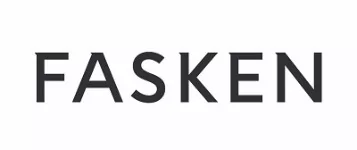On July 31st, 2023 Health Canada published the long-awaited new guidance on the distinction between advertising and other activities for health products. The new guidance replaces Health Canada's previous guidance from 1996 (updated in 2005) and builds on Health Canada's consultations on a draft version of the new guidance that was published in 2019 (which we reported in our bulletin, "IT'S HERE: Health Canada's new draft Guidance on Advertising versus Other Activities is now available").
Significantly, the new guidance applies to "health products", not just drugs. The new guidance applies to prescription drugs (including controlled substances), non-prescription drugs, medical devices, natural health products, biologics, vaccines, and animal health products.
The new guidance is similar in structure to the previous guidance but includes significant changes. Highlights of the changes include:
- The introductory section includes additional content and context factors to be considered when determining whether a message or activity is promotional, and clarifies that any information linked in a message should be considered in the assessment;
- Health Canada recommends that advertising preclearance agencies be consulted for assistance with assessing the promotional character of messages; and
- Examples of relevant types of messages and activities and related non-promotional criteria have been added and updated to reflect technological advances including social media and websites.
More details on some of these changes are provided below.
New Sections
Electronic Tools and Technology
The new guidance includes a section on information disseminated through social media and similar technologies. The guidance provides that such information may be non-promotional in the following circumstances:
- The social media website or platform is unbranded;
- The content, user-generated comments, hyperlinks and/or other interactive features which are under the sponsor's control do not place additional focus or emphasis on a specific health product and its benefits;
- The available "sharing" options (e.g., email, "like", "tweet", "re-tweet", "comment") do not modify the context in which the content is disseminated (e.g., cannot reach different audience or place emphasis on a specific product); and
- A person or organization and/or its representatives sponsoring the social media activity or message is not engaged in discussions except in a monitoring capacity (e.g., removal of inappropriate comments, reporting adverse events, and giving general messages such as "thank you for your comment" or "talk to your doctor for more information").
These non-promotional criteria also apply to other electronic interactive tools including quizzes, chat rooms, clinical software, online banner ads, web-based or mobile applications, keywords and metadata tags, search engine optimization tools, and tools that support decision-making by healthcare professionals ("HCPs").
Other Learning Activities
There is a new subsection under Educational Activities for "Other Learning Activities". These are unaccredited programs, events, or activities where medical/scientific information is presented to HCPs by their peers where the main focus is the exchange of scientific and clinical information. According to the new guidance, the intended audience of these events must be HCPs and staff involved in patient care. Patients, patient groups, relevant experts, sales representatives, and others may attend when their participation is justified and allowed by the event organizers. Members of the public should not attend.
The new guidance sets out several criteria for assessing whether such events are promotional. Key criteria for non-promotional events include the following:
- The need for the activity has been identified through a needs assessment in collaboration with relevant HCPs or their organizations;
- The objective of the program is clearly outlined and the activities are meant to address the gaps identified in the needs assessment;
- Materials for the activity are not widely distributed beyond participants;
- Evaluations are collected to assess whether program objectives were met;
- Speakers and moderators disclose conflicts of interest and funding sources;
- With respect to unauthorized health products, speakers disclose that Health Canada has not established the safety and effectiveness of the product and that the product is not authorized for sale in Canada; and
- Speakers have complete editorial control over the content being presented (i.e., independent of the sponsor or its agents).
New Types of Messages
The new guidance contains some other new examples of relevant types of messages, including Medical Procedure and Health Service Messages issued by HCPs, Risk Management Plans required or requested by Health Canada, and Patient Support Group Activities.
Other Notable Changes
Other notable changes in the new guidance include the following:
Clinical Trial and Investigational Testing Recruitment Material: Non-promotional materials should provide the health product manufacturer's name and the availability of further information about the clinical trial or investigational test may be effected via a website link or e-mail (versus only a telephone number).
Corporate Messages (Institutional Messages under the previous guidance): Inclusion of information beyond the name and therapeutic area of a health product may render the message promotional, except if such information is required to be provided by law (e.g., in securities filings).
Continuing Medical Education, Scientific/Medical Exhibits, and Conferences: The key factor in determining whether these events are non-promotional is the degree to which the program is independent of a manufacturer. The same audience restrictions as for Other Learning Activities (described above) apply to these events. Moreover, the following non-promotional criteria have been added:
- A health product manufacturer does not sponsor only specific portions of the agenda that are product-related;
- The agenda and the content of individual presentations from non-manufacturer/sponsor representatives are independently developed; and
- Sales representatives do not engage in promotional activities related to health products during the event, and samples are not distributed.
The new guidance applies to all such events held in Canada, whether they are domestic or international in nature. Display of an unauthorized drug product without prominently advising that the product is not authorized for sale in Canada, or actions directly or indirectly targeting the general public in Canada, may render such events promotional.
Formulary Kits or Packages: Non-promotional information may be submitted to formulary committees formed by public or private payers, including hospitals. Such information may be promotional if it is disseminated to a wider audience (whether concurrently or at a later date), except submissions to health technology assessment agencies, or if the information is accompanied by distribution of samples (unless required by the relevant formulary committee).
Medical Condition and Treatment Awareness Materials (Consumer Brochures under the previous guidance): These materials do not accompany a health product for the relevant medical condition and may be disseminated to the public through websites or social media. The following non-promotional criteria have been added:
- Declaration of sponsorship by name or logo is required;
- The need for patients to consult an HCP for complete information on the disease and the available treatment options, or if they believe they have symptoms of the disease, must be emphasized;
- All recognized treatment options including those not involving drugs (such as massage and acupuncture) should be discussed;
- No direct or indirect comparative therapeutic or safety claims should be included;
- No unauthorized health products or indications should be referred to; and
- No reference to the availability of a health product through the Special Access Program should be included.
Patient Information Materials (Patient Information Booklets under the previous guidance): Such materials may be non-promotional if they only contain information on the prescribed product and are only distributed to (or in the case of a website, accessible by) patients who have been prescribed the product.
Patient Support Group Literature: The new guidance clarifies that such literature includes websites, and provides criteria for assessing the promotional character of clinical research messages disseminated in such literature.
Press Releases and Press Conferences: Such announcements may be promotional if maintained on a manufacturer's website landing page for longer than one year. Statements about product safety or efficacy and comparisons to other treatments are permitted but must be factual to preserve an announcement's non-promotional character.
Publication Supplements: Sponsorship by the manufacturer must be declared to preserve non-promotional character.
Reference Texts, Peer-Reviewed Journal Articles: These materials must not have been solely written or edited by an employee or agent of a manufacturer to preserve non-promotional character.
Responses to Inquiries: Responses to inquiries pertaining to unauthorized products or indications may be promotional if they are communicated by sales or marketing personnel.
Our Life Sciences team has significant expertise advising the pharmaceutical and medical device industries on product promotion and other activities and is available to consult on the new guidance document.
The content of this article is intended to provide a general guide to the subject matter. Specialist advice should be sought about your specific circumstances.



